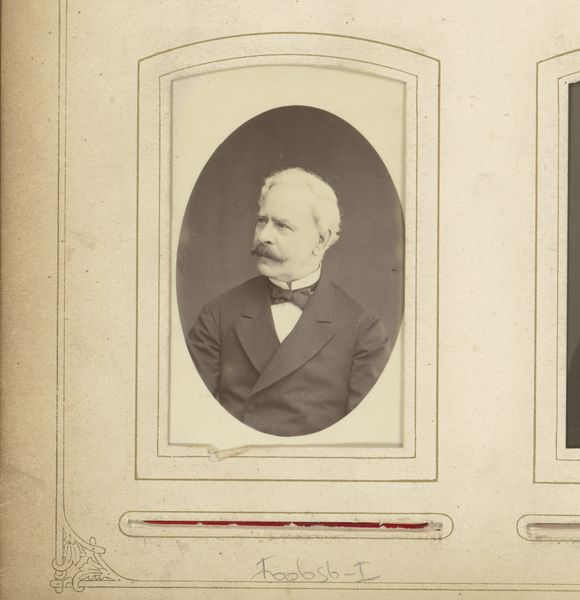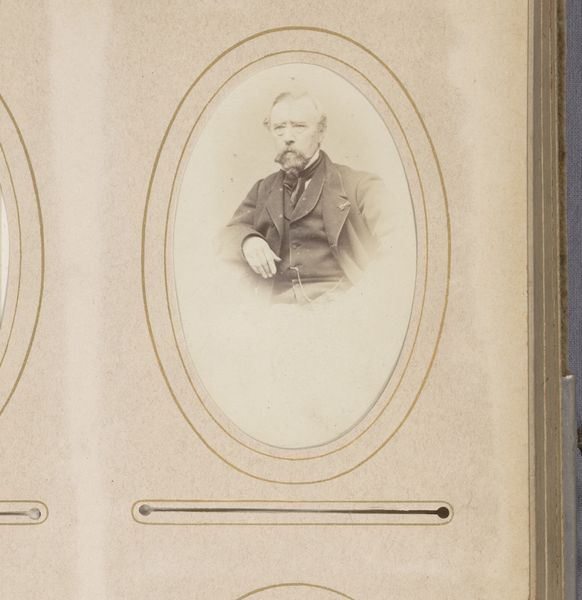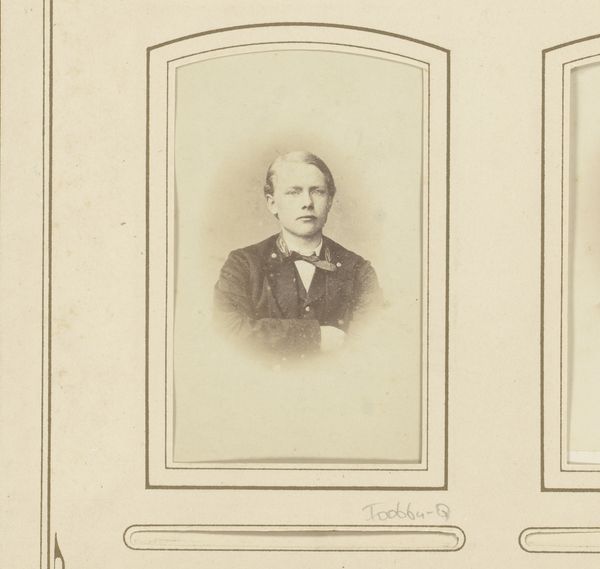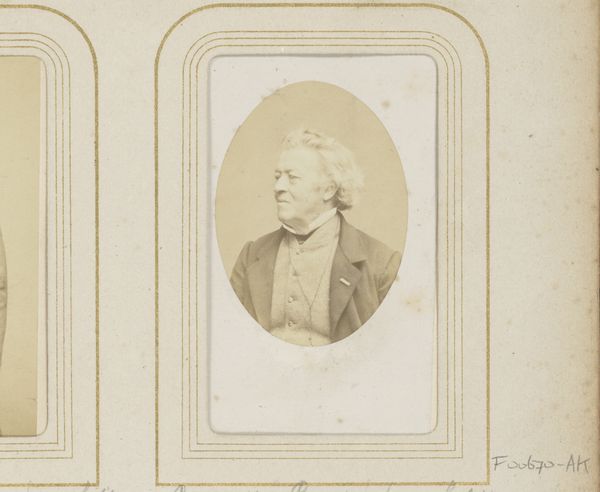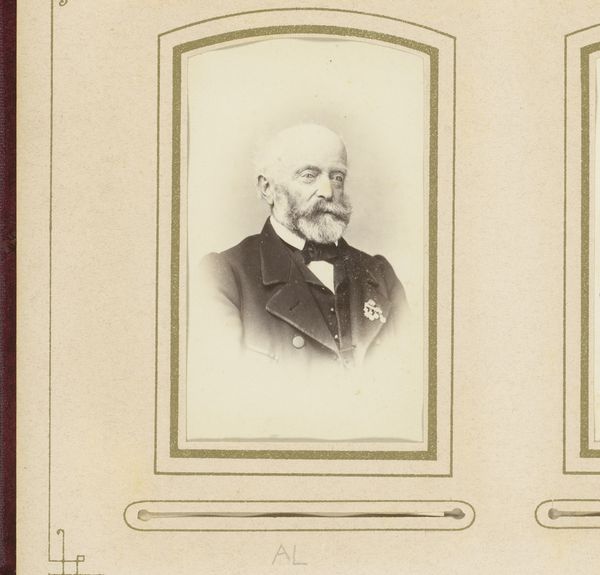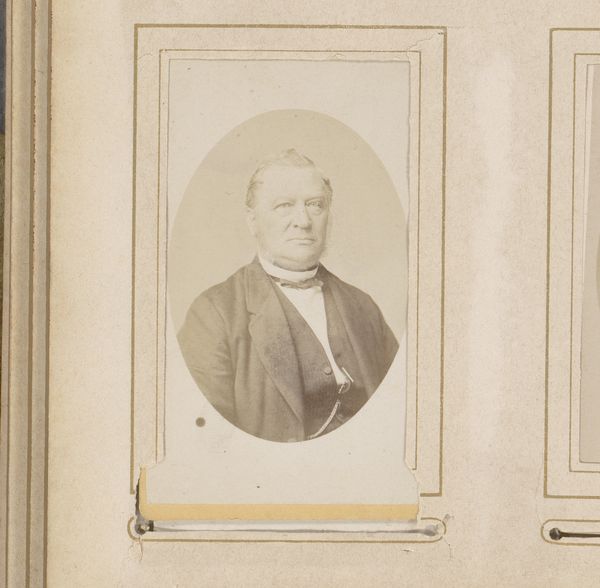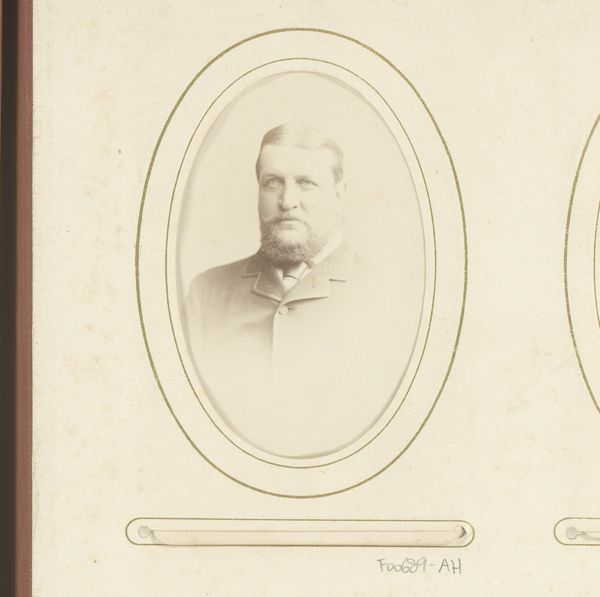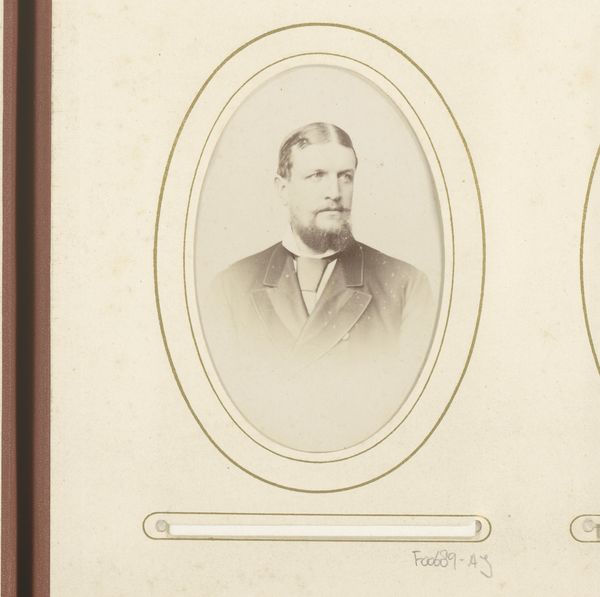
photography
#
portrait
#
self-portrait
#
photography
#
19th century
Dimensions: height 85 mm, width 50 mm
Copyright: Rijks Museum: Open Domain
Editor: This is "Portret van een zittende man," a photograph by Van Dyck en Zoon, dated sometime between 1860 and 1880. The man's gaze is quite direct; what’s your initial read of this image? Curator: It’s a study in power and representation. Consider the historical context: photography, during this period, served as a tool for both documentation and the construction of identity. The sitter’s stern expression, coupled with the formal attire, speaks volumes about the societal expectations placed on men of that era. How do you feel this image reflects or challenges traditional notions of masculinity, particularly within a 19th-century European framework? Editor: It feels a bit stiff and posed, doesn't it? The lack of spontaneity contrasts sharply with contemporary portraiture, perhaps signifying the constraints of the time? Curator: Precisely. Photography then wasn't as accessible or candid as it is now. Each image was carefully composed. We also have to remember the political landscape: empires were solidifying their power, and societal roles were strictly defined. Portraits like this served to reinforce these power structures. Does this context influence your interpretation of his expression now? Editor: It does. The sitter is participating in constructing an image, an ideal…or perhaps fulfilling a social role. Does knowing that the studio's name translates to "Van Dyck and Son" also suggest an effort to claim cultural capital by aligning with the famed 17th century artist Anthony van Dyck? Curator: That’s a fascinating angle! Implying a continuation of artistic legacy is definitely a calculated move. It's an act of self-fashioning that resonates with broader discussions about class, status, and the male gaze. By aligning themselves with artistic history they seem to be signaling respectability and timelessness. It shows how a single image can unpack layers of meaning related to power, representation, and historical context. Editor: I'm definitely seeing the photograph as more than just a straightforward portrait now. There’s a complex narrative of power, self-fashioning and aspiration being performed.
Comments
No comments
Be the first to comment and join the conversation on the ultimate creative platform.
